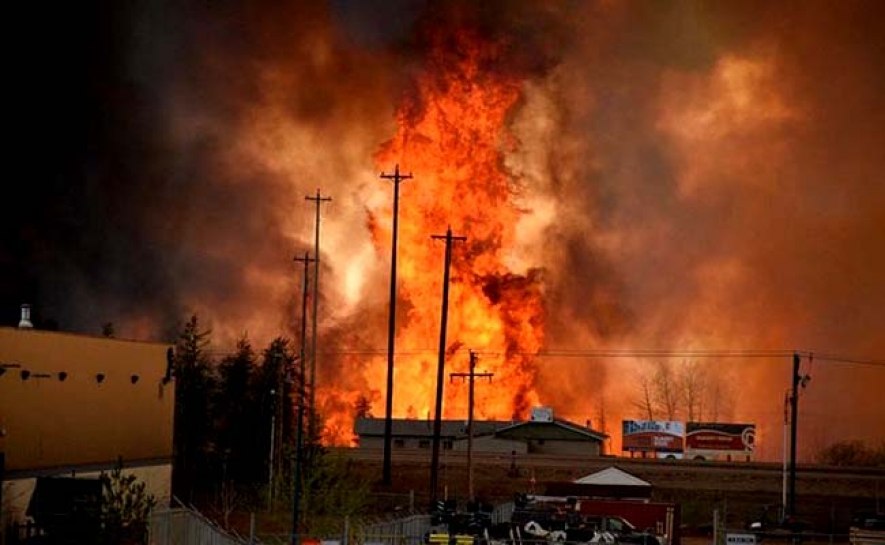“This remains a big, out of control, dangerous fire,” Public Safety Minister Ralph Goodale said of the raging inferno bigger than London that forced the evacuation of the city of Fort McMurray.
Winds were pushing the flames east of the epicenter around the oil city late Saturday, as nearly all 25,000 people who were still trapped to the north finally left town, either via airlift or convoys on the roads.
The wildfire had doubled in size in one day, covering more than 200,000 hectares (494,000 acres) by midnight and continuing to grow, the Alberta Emergency Management Agency said in an update late Saturday.
“Fire conditions remain extreme,” it said.
Low humidity, high temperatures nearing 30 degrees Celsius (86 Fahrenheit) and gusty winds of 40 kilometres (25 miles) in forests and brush dried out from two months of drought are helping fan the flames.
Still, in a glimmer of positive news, the authorities have recorded no fatalities directly linked to the blaze that began almost a week ago. Cooler, moist air with some chance of rainfall could help slow the fires in the coming days, Alberta Fire Service director Chad Morrison said. However, “we need heavy rain,” he cautioned. “Showers are not enough.”
The only “good news,” he said, was that the wind was pushing the fires away from Fort McMurray and oil production sites to the northeast, presenting less threat to people although causing serious damage to the environment.
The government has declared a state of emergency in Alberta, a province the size of France that is home to one of the world’s most prodigious oil industries.
In the latest harrowing chapter, police convoys shuttling cars south to safety through Fort McMurray resumed at dawn. Making their way through thick, black smoke, the cars were filled with people trapped to the north of the city, having sought refuge there earlier in the week.
Police wearing face masks formed convoys of 25 cars, with kilometers (miles) of vehicles, smoke swirling around them, patiently awaiting their turn.
Separate convoys of trucks carried essential equipment to support “critical industrial services,” according to the Alberta government. With elevated risk that something could go wrong, the convoys along Highway 63 were reduced in size compared to the previous day.
Those being evacuated -- for a second time, after first abandoning their homes -- had fled to an area north of the city where oil companies have lodging camps for workers.
But officials concluded they were no longer safe there because of shifting winds that raised the risk of them becoming trapped, and needed to move south to other evacuee staging grounds and eventually to Edmonton, 400 kilometres away.
Some 2,400 vehicles made it to safety on Friday. But concerns are growing about the effect on the oil industry, the region’s economic mainstay, as the fires come dangerously close to extraction sites.
Syncrude, one of several oil companies in the region, announced that it had shut down its facility 50 kilometres (31 miles) north of Fort McMurray due to smoke, followed by Suncor, after the local authorities ordered them to evacuate personnel.
- AFP




















